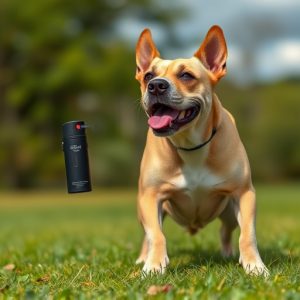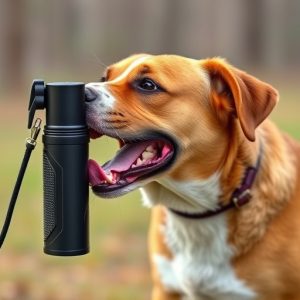Mace Dog Spray Defense: Legal Implications of Maximum Distance
The Mace Dog Spray maximum distance reached is a critical legal consideration for self-defense and v…….
The Mace Dog Spray maximum distance reached is a critical legal consideration for self-defense and varies across jurisdictions. Understanding this distance, influenced by spray type and environmental factors, is essential for both users and law enforcement to ensure compliance with state or local ordinances. Legal defenses for Mace Dog Spray cases focus on reasonable responses to threats, context, and necessity, validating its use within safe parameters through expert analysis of witness testimonies, training records, policies, and footage.
In today’s world, understanding the legal implications of self-defense tools like mace dog spray is crucial. This article delves into the intricate details surrounding the maximum distance at which mace dog spray can be legally deployed, exploring the varying legal interpretations. We guide you through building a robust defense strategy if you’ve used mace dog spray in self-defense, focusing on key considerations and rights. By understanding the law, individuals can ensure they act within their legal rights when facing potential threats.
- Understanding Mace Dog Spray and Its Legal Implications
- The Maximum Distance in Question: Exploring the Law
- Building a Strong Defense Strategy for Mace Dog Spray Cases
Understanding Mace Dog Spray and Its Legal Implications
Mace dog spray, also known as pepper spray for dogs, is a non-lethal self-defense tool designed to incapacitate an aggressor by causing temporary blindness and respiratory distress. It’s important to understand that this spray has specific legal implications, especially regarding its maximum distance reached. The effective range of mace dog spray varies among brands and models, but typically it can reach up to 30 feet (approximately 9 meters). This range is crucial in defining the legal boundaries of its use, as excessive spraying beyond necessary limits could lead to civil liabilities.
In many jurisdictions, the lawful use of mace dog spray is governed by strict regulations. Users must ensure they are within the maximum distance when deploying the spray, and only target specific body areas to minimize harm to non-threatening individuals or animals. Legal defenses for using mace dog spray often hinge on factors like reasonableness in response to a perceived threat and adherence to local laws and guidelines. Understanding these legal implications is essential for anyone considering carrying or using mace dog spray for self-defense purposes.
The Maximum Distance in Question: Exploring the Law
The legal implications surrounding Mace Dog Spray maximum distance reached are intricate and vary across jurisdictions. In many regions, the use of such spray is regulated to ensure public safety and minimize harm. The law typically sets a limit on the distance from which an individual can deploy dog spray, with penalties for exceeding this threshold. This maximum distance is not merely a guideline but a legal mandate, often specified in state or local ordinances.
The Mace Dog Spray maximum distance reached can be influenced by several factors, including the specific laws governing its use, the type of spray employed, and environmental conditions. For instance, some jurisdictions might allow for a broader range under exigent circumstances, while others maintain stricter controls to prevent misuse. Understanding these legal nuances is crucial for both individuals seeking to defend themselves with dog spray and law enforcement agencies tasked with enforcing compliance.
Building a Strong Defense Strategy for Mace Dog Spray Cases
In building a defense strategy for Mace dog spray cases, understanding the product’s maximum distance reached is crucial. This knowledge allows attorneys to challenge witness accounts and present a compelling narrative that ensures the use of such devices was within safe and legal limits. Expert witnesses can provide insights into the range of the spray, considering factors like wind speed and direction, which can significantly impact its effectiveness and accuracy.
A strong defense should also focus on context and necessity. Lawyers can argue that if the individual using the spray did so in a manner consistent with self-defense or public safety protocols, it may reduce liability. Documenting training records, use-of-force policies, and any relevant body camera footage can strengthen the case, demonstrating reasonable force was employed, especially when considering the Mace dog spray maximum distance reached during the incident.
In understanding the legal implications of mace dog spray, especially regarding the maximum distance it can be used effectively, it’s clear that navigating these cases requires a robust defense strategy. As demonstrated, the law surrounding this issue is complex and nuanced. By recognizing the specific circumstances that determine legality and employing a well-crafted defense, individuals facing charges related to mace dog spray deployment can navigate these legal waters successfully. Remember, knowledge of the maximum distance reached by such spray, as per current legal interpretations, is key to building a strong case.


